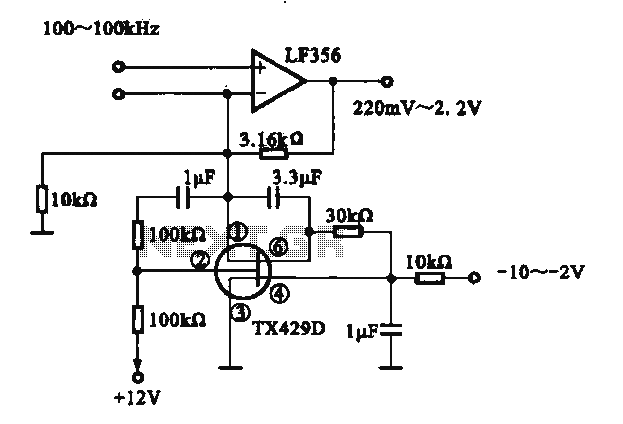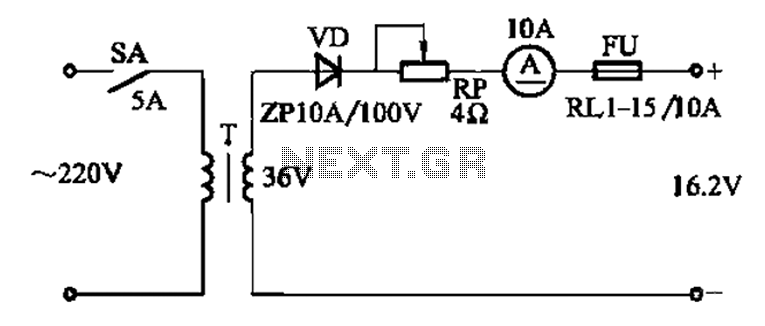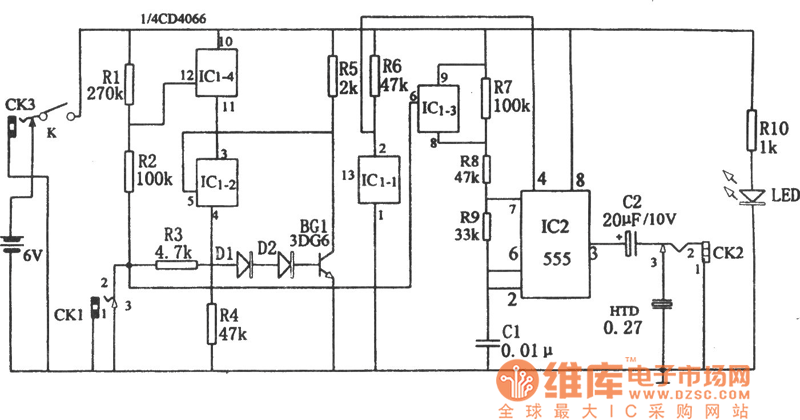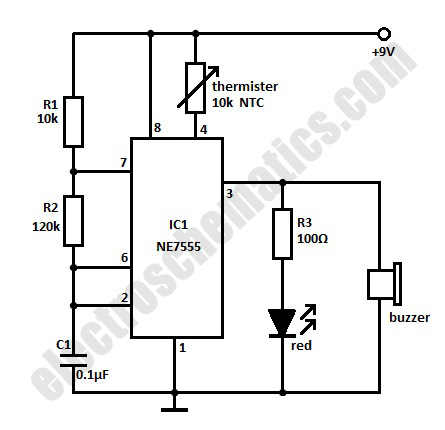
Variable gain amplifier circuit

A variable gain amplifier is presented. This circuit adjusts the output signal amplitude based on the input signal. The core component is an operational amplifier configured with a negative feedback circuit. By varying the feedback amount, the gain of the amplifier can be modified. The design features a control terminal utilizing a double gate field effect transistor, specifically the PIX429D, which serves as the negative feedback control element. The control voltage can vary from -10 V to -2 V, resulting in an output range that changes from 220 mV to 2.2 V.
The variable gain amplifier operates by utilizing an operational amplifier (op-amp) at its core. The op-amp is configured in a negative feedback arrangement, which is essential for controlling the gain. The feedback loop is adjusted by manipulating the feedback resistor, which is influenced by the control voltage applied to the double gate field effect transistor (FET) PIX429D.
The operational amplifier amplifies the input signal based on the gain set by the feedback network. The gain can be expressed as the ratio of the output voltage to the input voltage. By altering the control voltage applied to the FET, the resistance in the feedback path changes, allowing for a dynamic adjustment of the gain. This allows the output voltage to vary within a specified range, in this case, from 220 mV to 2.2 V, depending on the control voltage level.
The operational amplifier's performance characteristics, such as bandwidth, slew rate, and noise figure, are critical in determining the overall effectiveness of the variable gain amplifier. The design should ensure that the op-amp operates within its linear range to avoid distortion of the amplified signal. Additionally, the choice of the PIX429D FET is crucial, as it must provide adequate control over the feedback mechanism without introducing significant noise or delay.
Overall, this variable gain amplifier design offers flexibility in signal processing applications, where adjustable gain is necessary to accommodate varying input signal levels while maintaining signal integrity.Variable gain amplifier Shown is a variable gain amplifier. For fixing the input signal, the output signal amplitude of the controllable amplifier circuit. The electrical main road is an operational amplifier, negative feedback circuit by changing the amount of feedback to change the gain of the amplifier, the figure having a base control terminal double gate field effect transistor PIX429D negative feedback control device, the control voltage -10 to - 2 V of the change between, making the output between 220 mV ~ 2.2 V change.
The variable gain amplifier operates by utilizing an operational amplifier (op-amp) at its core. The op-amp is configured in a negative feedback arrangement, which is essential for controlling the gain. The feedback loop is adjusted by manipulating the feedback resistor, which is influenced by the control voltage applied to the double gate field effect transistor (FET) PIX429D.
The operational amplifier amplifies the input signal based on the gain set by the feedback network. The gain can be expressed as the ratio of the output voltage to the input voltage. By altering the control voltage applied to the FET, the resistance in the feedback path changes, allowing for a dynamic adjustment of the gain. This allows the output voltage to vary within a specified range, in this case, from 220 mV to 2.2 V, depending on the control voltage level.
The operational amplifier's performance characteristics, such as bandwidth, slew rate, and noise figure, are critical in determining the overall effectiveness of the variable gain amplifier. The design should ensure that the op-amp operates within its linear range to avoid distortion of the amplified signal. Additionally, the choice of the PIX429D FET is crucial, as it must provide adequate control over the feedback mechanism without introducing significant noise or delay.
Overall, this variable gain amplifier design offers flexibility in signal processing applications, where adjustable gain is necessary to accommodate varying input signal levels while maintaining signal integrity.Variable gain amplifier Shown is a variable gain amplifier. For fixing the input signal, the output signal amplitude of the controllable amplifier circuit. The electrical main road is an operational amplifier, negative feedback circuit by changing the amount of feedback to change the gain of the amplifier, the figure having a base control terminal double gate field effect transistor PIX429D negative feedback control device, the control voltage -10 to - 2 V of the change between, making the output between 220 mV ~ 2.2 V change.




